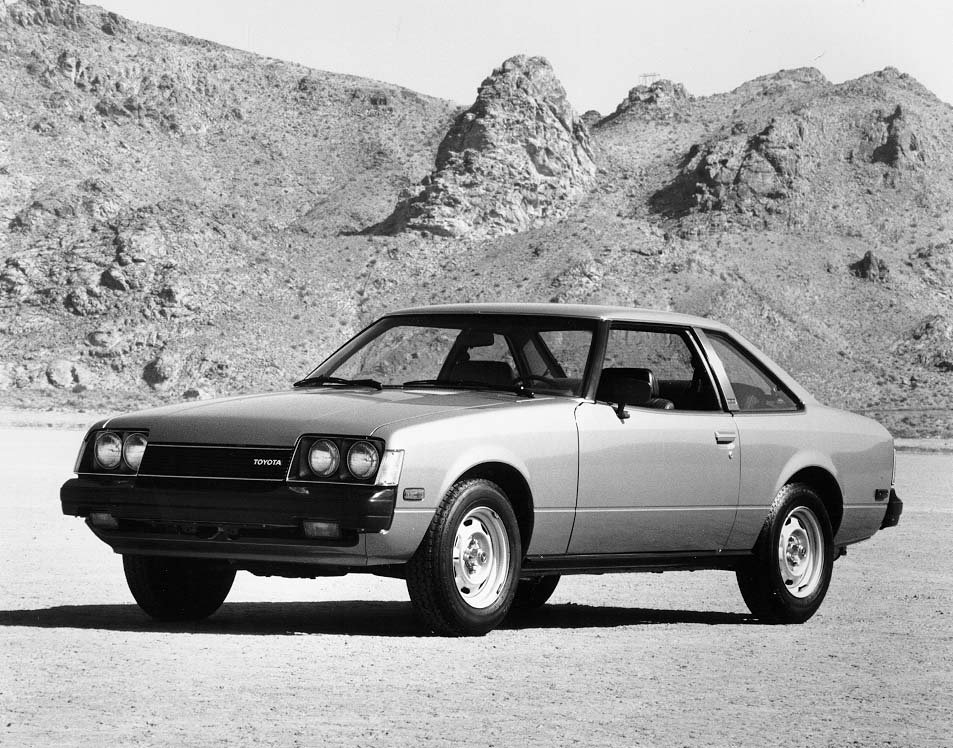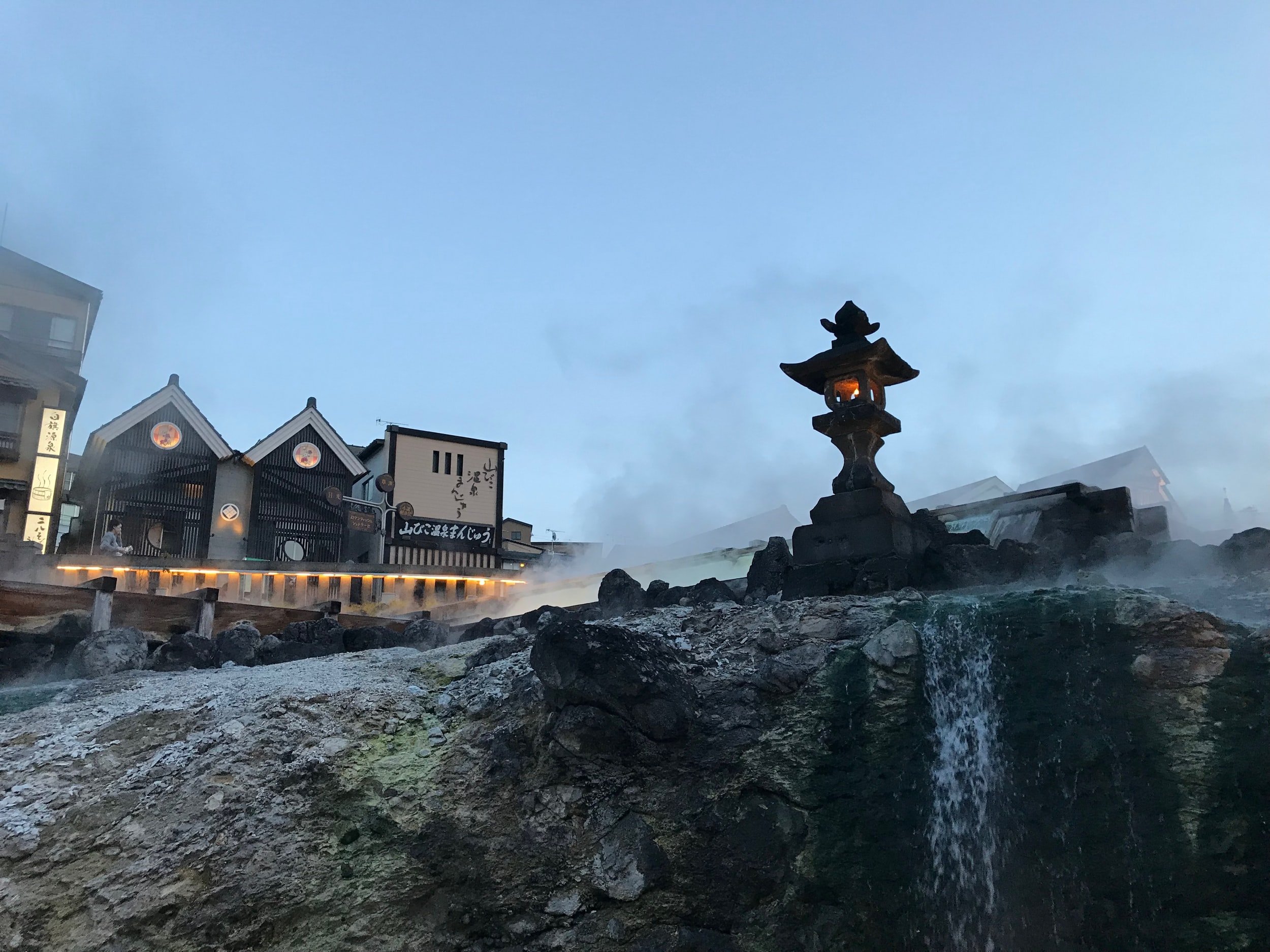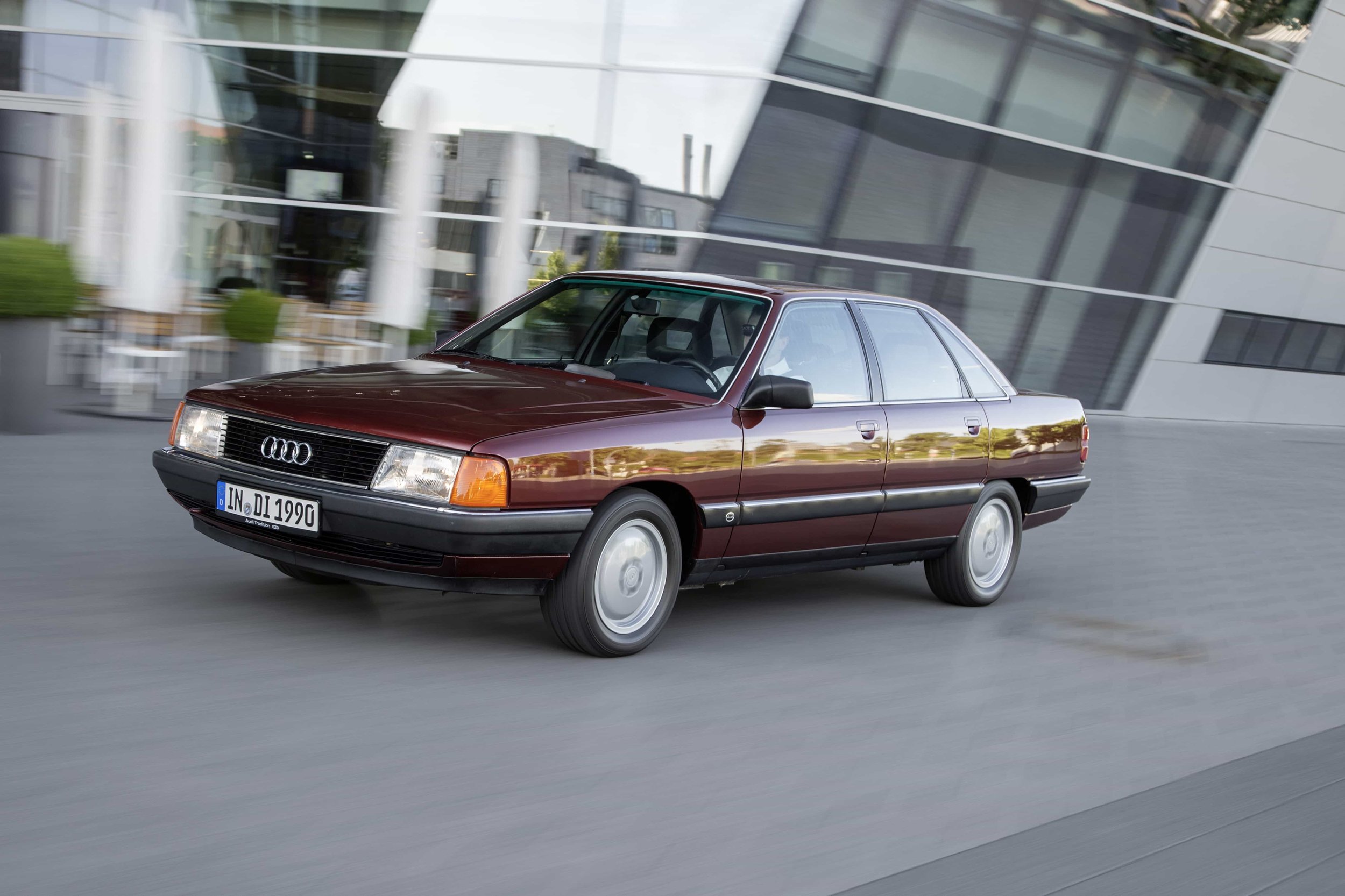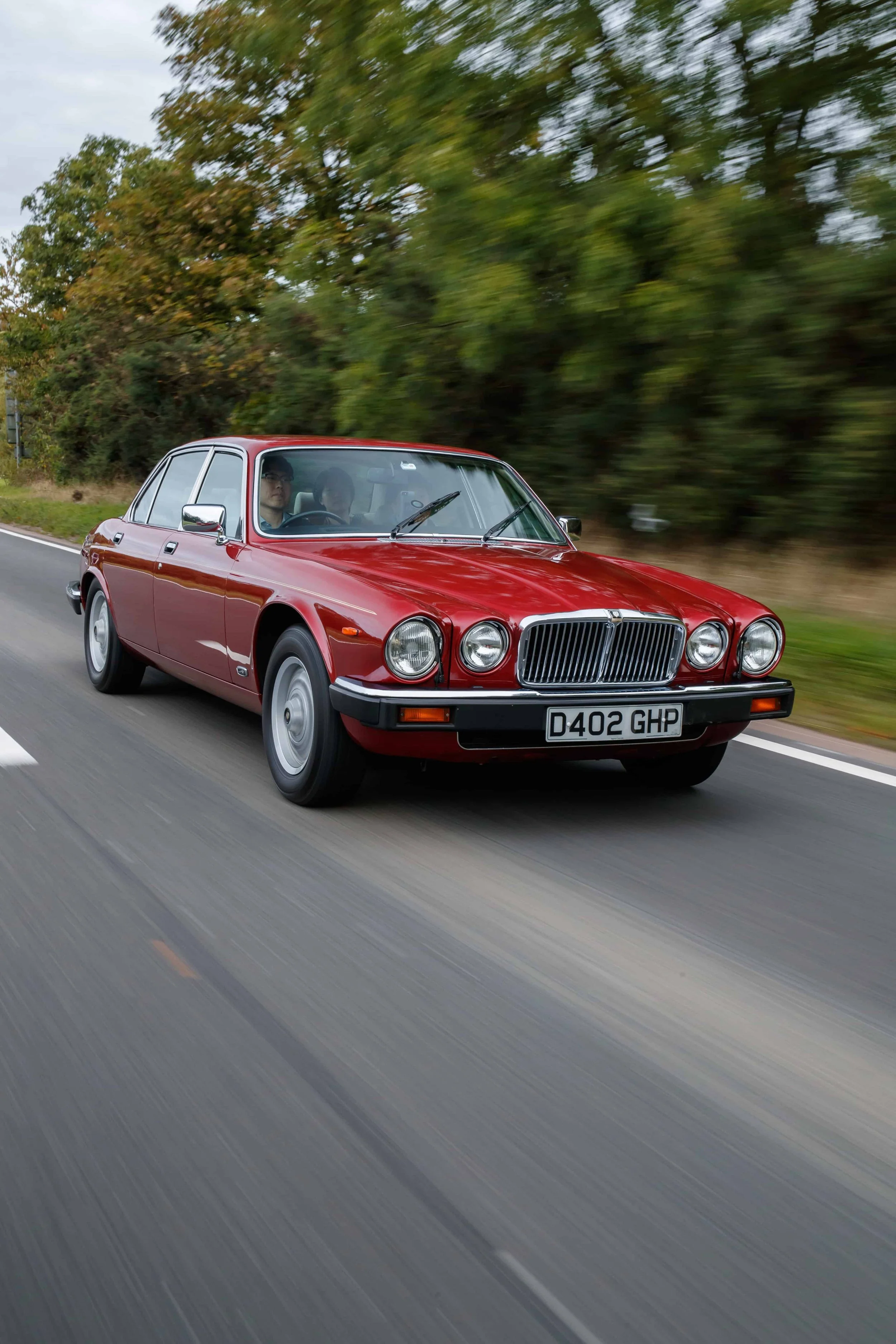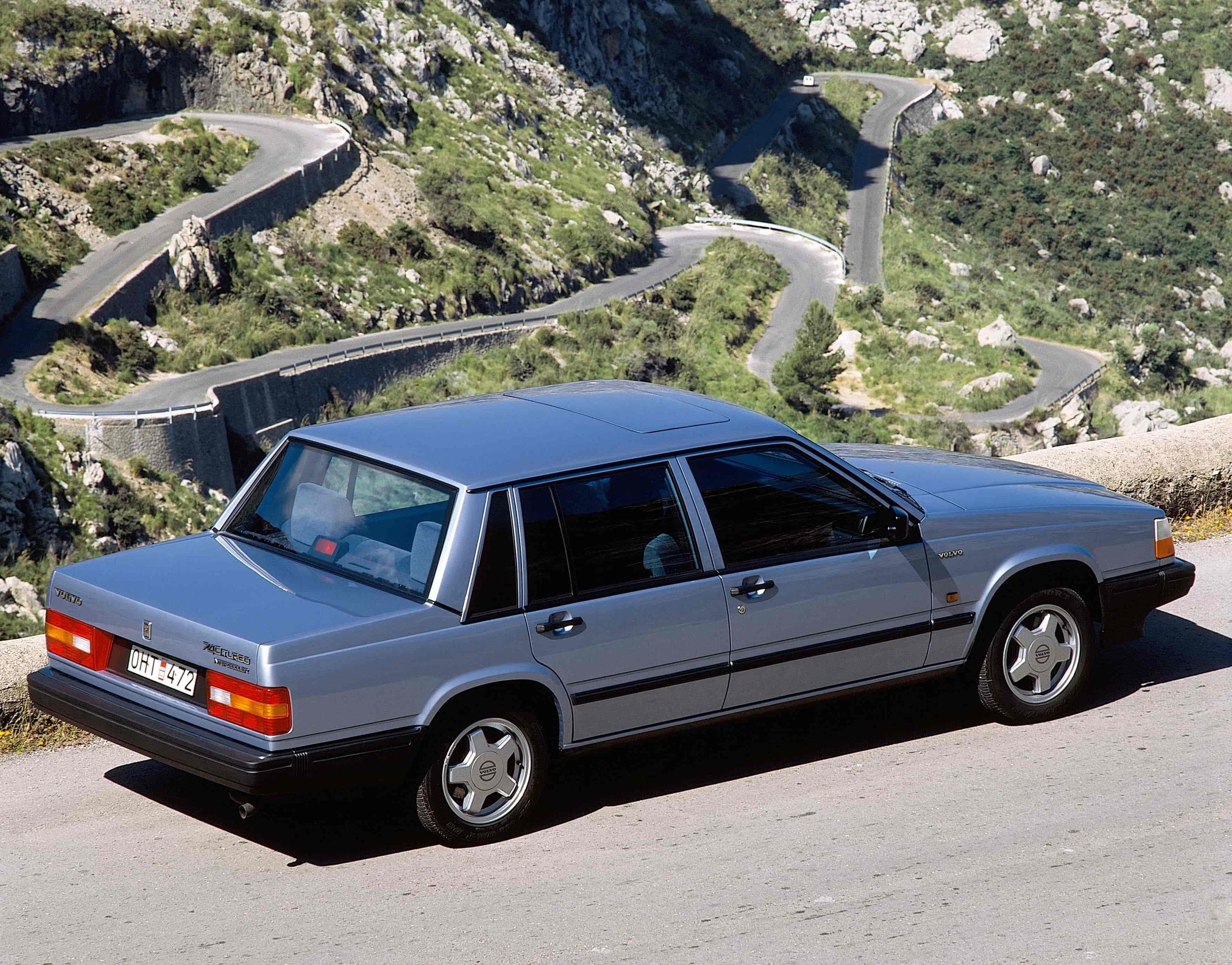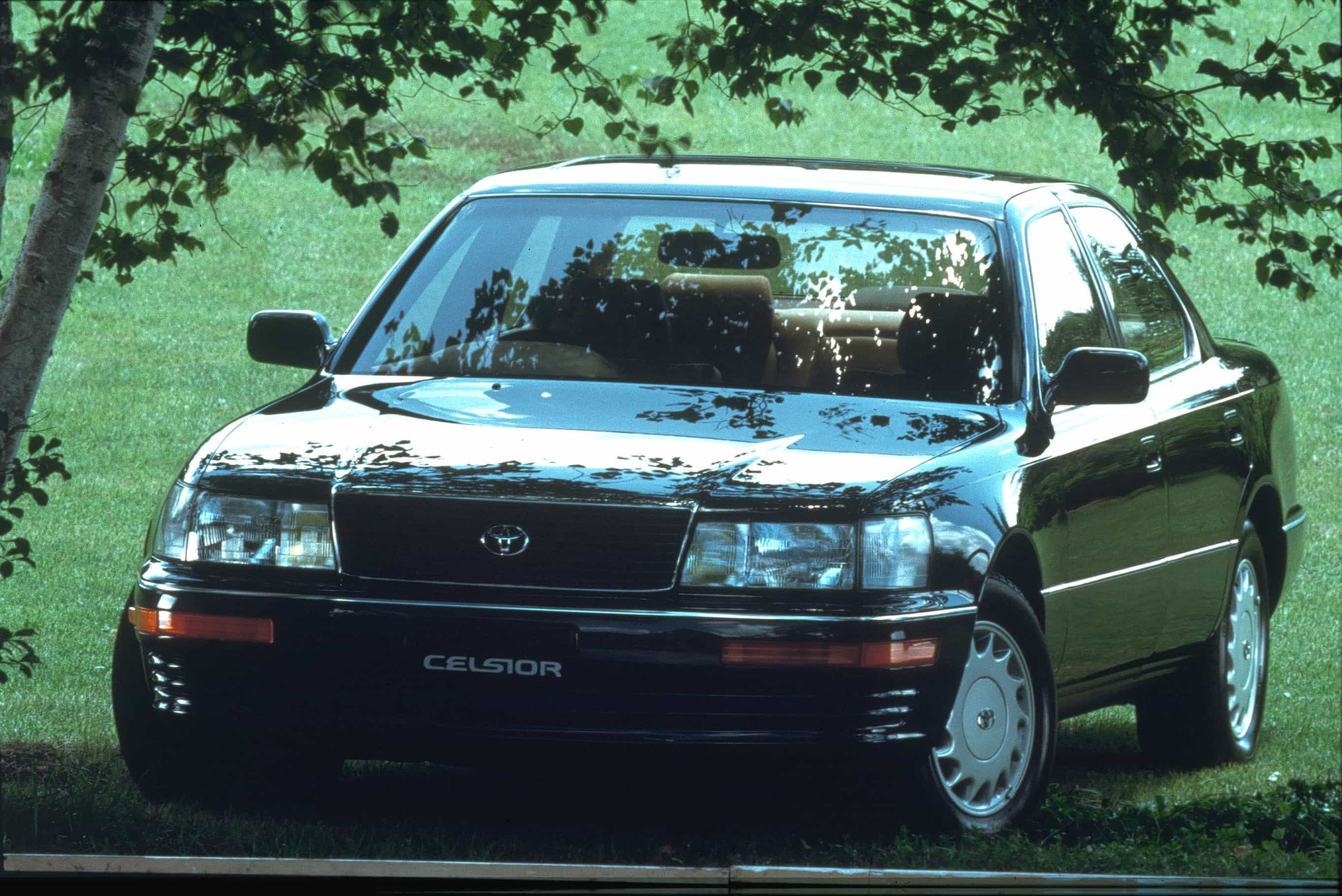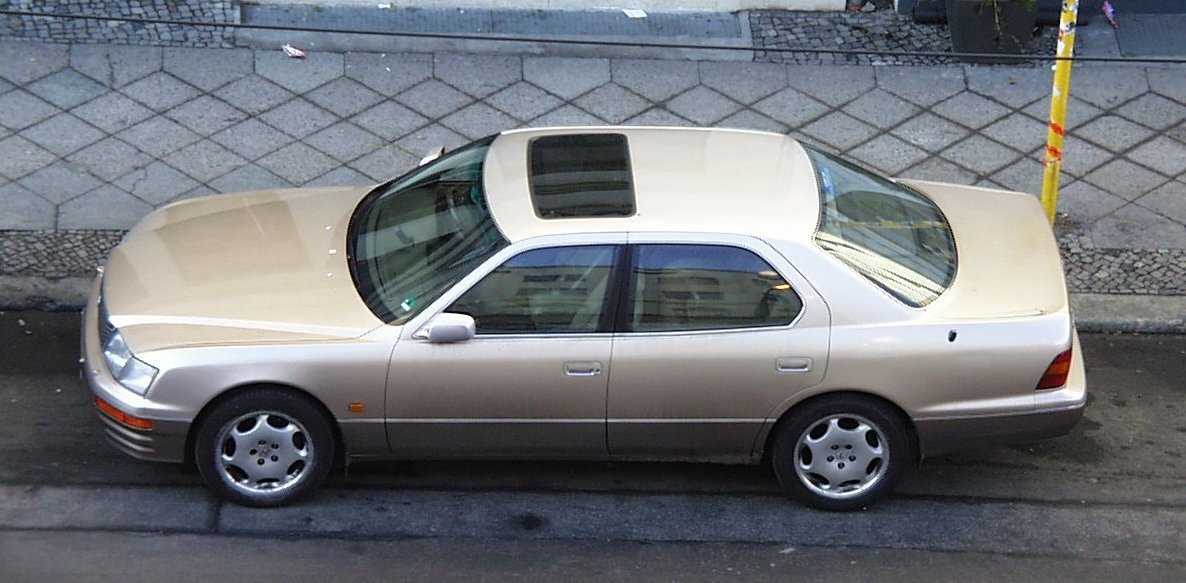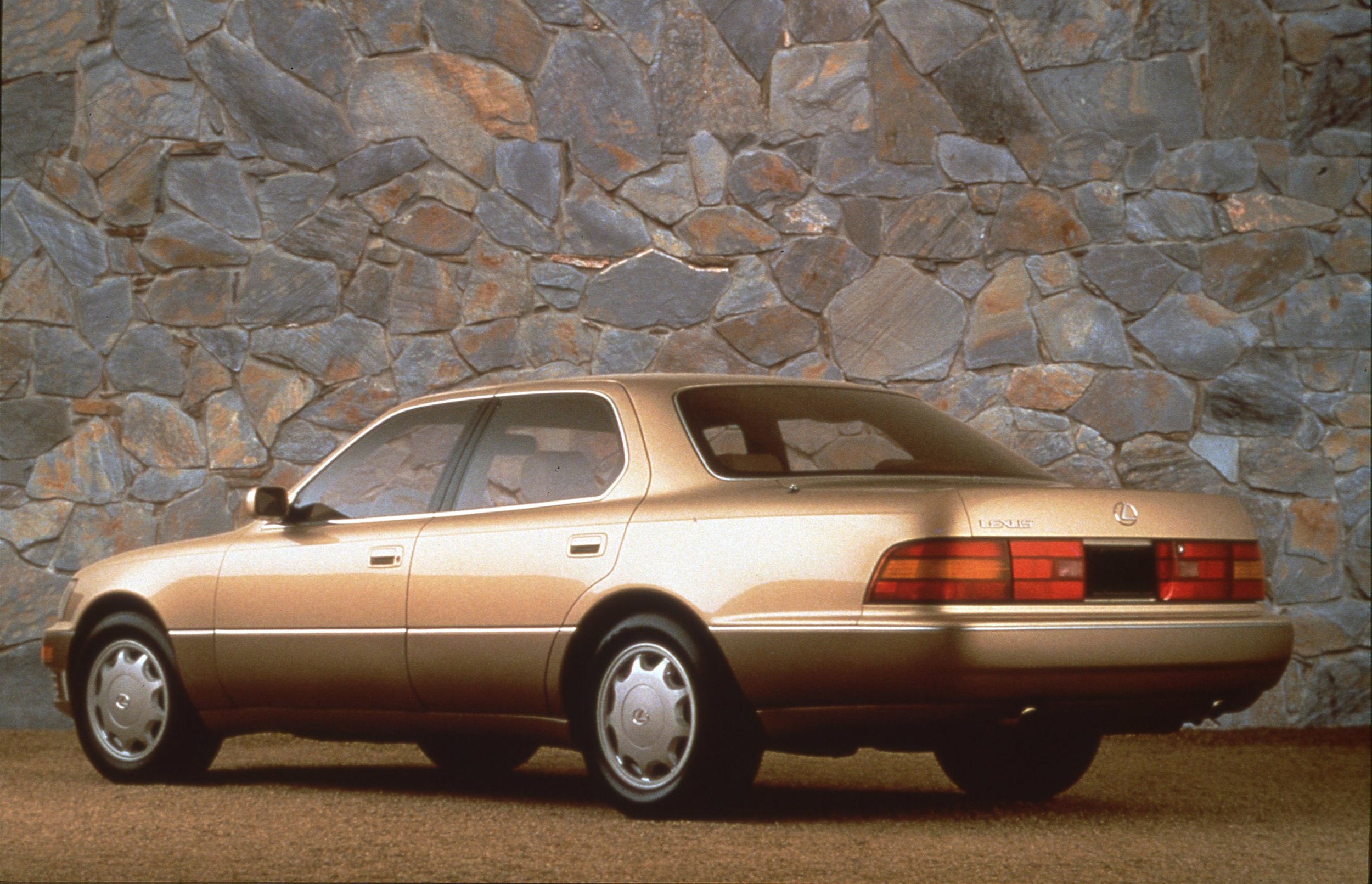The Lexus LS400 Is The Embodiment Of Perfection
Let me ask you a question: what is perfection? This isn’t a riddle or so philosophical quandary. What actually comes to mind when you think of the word. You might think of its textbook definition or associate it with geometry. Perhaps it applies when one goes above and beyond the call of duty. It’s fascinating that humans, the deeply flawed creatures we are, can even wrap our heads around the concept. Maybe it doesn’t represent something literal, but rather a certain mindset. Although we’ll never be truly perfect in anything we do, the chase makes us dig deep within to push ourselves past our breaking point and come out that much stronger in the end. For evidence of this, look no further than Lexus.
Toyota dumped countless resources and man-hours into the endeavor and put their very reputation at stake. No one thought a Japanese company could challenge the old guard at their own game, but they ignored the naysayers and pressed onward. 1,400 engineers, 2,300 technicians, and dozens of designers worked to bring their far-fetched vision into reality. Six years and $1 billion later, they had something that was timeless on the outside, elegant on the inside, and groundbreaking where it mattered most. Their creation was an amalgamation of contradictions. Powerful yet efficient, Quiet despite possessing the heart of a lion, and inconceivably aerodynamic even with its traditional aesthetic and proportions. And they redefined what luxury meant to customers in a broader sense. No expense was spared in their relentless pursuit to build the finest luxury sedan in the world. This is Celsior: The Lexus Story.
At long last, Toyota finally began to chip away at the American market. They had a miraculous recovery since the Toyopet Crown debacle in the late 50s. That car was pulled in the early 60s, but Toyota returned with a selection of compacts that were a little more suited toward American tastes. Their renewed focus in the market was a slow grind to start, but by 1967 exports totaled about 157,000 units. The introduction of the Corolla and Celica accelerated things even further. Toyota started 1969 as the 5th largest automaker in the world and by the time 1973 wound down they were the 3rd largest. They, as well as other foreign makes, carved out a lucrative niche at the very low end of the market.
Their grip on the industry tightened even further as the 1974 Oil crisis loomed. More than half of all cars sold that year were compacts, mostly of the Germain variety to start, though Japanese makes would also make inroads here. No one made quite as concerted an effort to corner this part of the American market as Toyota. By 1975, they surpassed Volkswagen to become the largest car importer in the country. They released products that resonated with the newfound priorities of car buyers like the second-generation Celica, and this culminated with them exporting 1.41 million cars in 1977. Toyota was riding high in the low tide, but executives at their American headquarters in Torrance, California were taking note of a worrying trend.
Baby boomers, or those born from 1946 through 1964, proved to be their most loyal customers. They turned to the brand during their cash-strapped college years, stuck with them through the turbulent oil crisis, and remained true in the malaise of the latter half of the 70s. Around the turn of the decade, this demographic was experiencing a metamorphosis of sorts. They were through university, climbed the corporate ladder, and were entering their peak earning years. Seeking transportation that suited their new lifestyles, they traded in their trusty Toyotas and defected to makes like BMW, Mercedes, Cadillac, and Lincoln. There wasn’t much the company could do to stop the bleeding. The most prestigious offering they had stateside was the Cressida, though this didn’t quite fit the bill. If you’re not familiar with this car, then you can think of it as the Avalon of its day. A fine car in its own right, but not exactly a status symbol.
TOP ROW: 1978 Celica, 1981 Cressida.
BOTTOM ROW: 1983 Crown, 1st Generation Century
Toyota sold a few cars overseas that might fill the gap. An all-new Crown was released for 1983 and they seriously considered reintroducing the nameplate to the market. Torrance vehemently opposed the idea. They said it was a car designed in Japan for the Japanese market and pointed to its engine offerings as evidence. Its range of straight fours and sixes wouldn’t match up to the 8 and 12-cylinder motors that westerners were accustomed to. It was also too small and its styling wouldn’t likely appeal to Americans. There was also the Century. Not only was it the expensive car Toyota produced, but it was also among the most revered cars in Japan. This vehicle also wouldn’t be right for the market. At about $125,000, it overshot their intended market by a country mile. It was also designed to be driven in rather than driven. In much of Asia, it is customary for owners to be chauffeur-driven in cars like these. Buyers in the States would rather do the driving themselves. These reasons were more than enough to rule out a US-spec Century. If they did decide to jump into the luxury market, then the car would need to be designed from scratch. Employees in the US stressed the importance of such a car.
Yukiyasu Togo, the recently appointed president of Toyota’s American operations, was one of the most outspoken proponents of this effort. His words carried more weight internally than most. Like a chameleon, he had the uncanny ability to adapt to his environment. When he was assigned to Thailand in 1971, he immersed himself in their culture by shaving his head and entering a Buddhist monastery for two weeks. In 1976, he was charged with leading their Canadian operations. When he wasn’t fielding calls at his desk, he was selling cars door to door, trying to figure out why sales were in the gutter. His English wasn’t very good, but that didn’t stop him from visiting 150 homes, selling 7 cars, and coming up with a new program for customer satisfaction. Toyota sent Yuki to The United States in 1983, and one of the first things he did at his new post was to persuade them to build a luxury car for the American market.
“I was convinced that by building a true luxury car, Toyota could take overall image leadership in the United States. If we could carry the badge of number one in this huge market it would send reverberations throughout the world.”
He had a small minority on his side, but the ones with the final say on the matter would take more than a little convincing. Executives in Toyota City didn’t take the prospect of a luxury car too well. They questioned whether they could pose a legitimate threat to entrenched European makes. The endeavor could also have long-standing ramifications on their bread and butter compact cars. Posing competition to American makes could worsen already strained trade relations between the two countries, which might result in further protectionist regulations. The initial audience with the board didn’t go Yuki’s way, though he was persistent. A flurry of meetings followed, and while they never granted his request, he was able to build up a network of influential employees that championed his cause. The minority soon turned into the majority.
They could deny it no longer. In August of 1983, company chairman Eiji Toyoda held a confidential meeting with the brightest engineers, designers, and executives Toyota had to offer. At the end of it, he posed to them a single question: “Can we create a luxury car that can challenge the very best?” Everyone in attendance answered in unison: “Yes!” They symbolized their desire to make a flagship vehicle by drawing a circle around an F. The circle F, or maru-efu as they would call it, was officially underway.
In February of 1984, initial development work was handed off to a 15-person committee headed by Shoji Jimbo. It was an obvious choice. Prior to taking on this assignment, he headed development of the 4th and 5th generation Mark II. These cars were so popular that the Japanese media dubbed car buyers’ reaction to them the "Mark II Phenomenon." In addition to this, he also worked on the Celica hatchback and Cressida, two critical export models. His knowledge of the American market would be key to developing a car suited to Western tastes.
The entire team had convened by October of '84. They rented the foreign luxury cars they sought to benchmark and drove 150 miles east to Hakone, a resort town just outside Tokyo. The trip saw them tackle a wide variety of road conditions. The straight shot on the Tomei expressway got them as close to the Autobahn as they could manage while the winding mountainous roads allowed them a chance to scrutinize their driving dynamics.
When they finally arrived at the hot spring, they discussed the aspects that made them so admired the world over. It was during these discussions that they realized they'd have their work cut out for them. Each car was a seamless blend of luxury and sportiness. Improving upon them in any way appeared to be a Herculean task. The Mercedes-Benz S-class and BMW 7 series were the largest, most luxurious, and most prestigious models their companies had to offer, as a starting point and went from there.
Genchi Genbutsu is a Japanese phrase that, when translated, says “go, see, and confirm.” It discourages making brash assumptions and pushes one to make firsthand observations. In the case of maru-efu, this meant going to where their customers were and seeing how they operated in their element. Yuki sent a team of 20 designers and engineers out to Southern California. As they were boarding the plane to the US, he told them:
“You must spend time living in America to see for yourselves how American luxury buyers live, and to understand their sense of value.”
The team stayed in Laguna Beach, a wealthy coastal town about an hour south of Los Angeles that overlooked the Pacific Ocean. They got to work right after arriving. Most American employees were still in the dark about maru-efu, and the ones that touched base with them weren’t entirely sure of their intentions. Still, they were more than happy to invite them for dinner. The team didn’t concern themselves with eating. Instead, they took note of the cars parked outside of the restaurant. Many of them were from upscale brands as they expected, but they also took note of the myriad of aftermarket modifications. Gilded hubcaps, landau tops, vanity plates, and garish paint jobs were just a few of the changes they observed. Valets were also mindful of which cars were parked where. The most expensive cars were parked at the very front, lesser vehicles were parked a bit further back, and ones of the lowest tier were relegated to the outer reaches of the establishment. This offered a peek into what these customers held closest to their hearts and what they could live without.
They also paid car dealerships a visit. Everything from homely Toyota stores to high-end boutiques were scrutinized. They wanted to understand the differences in how these facilities operated and, more importantly, how they treated their clientele. When they weren’t occupied with this, they spent their time test driving more of the competition, questioning car buyers, and collaborating with Calty Design Research, Toyota's styling outpost in nearby Newport Beach.
The team did anything they could do to get inside of their customer’s heads. When coming up with the design for the steering wheel, for instance, they rushed down to the local drug store and bought plastic fingernails so they could better visualize the driving experience from the perspective of an American woman.
It was also during this phase of the design process that Michikazu Masu made a breakthrough in regards to interior ergonomics. His daughter took a carpool to school, and in this particular instance, all of the kids were in a Mercedes. When Masu went to pick her up, she asked why she slid forward in her seat every time the brakes were applied. He reasoned it was because the interior was much too stiff. Passengers weren’t secure in their seats, almost as if they weren’t entirely welcome. He began exploring ways to improve upon this. He drew a few quick sketches. One of a person sitting with their backs straight up in an uncomfortable position and another practically being swallowed whole by their seat. Surely there was a way to take the responsiveness of the Germans and the opulence of the Americans and create a happy medium between the two.
The scouting trips weren’t limited to the Los Angeles area. Squads were sent out to New York, Miami, Houston, Denver, Chicago, and San Francisco. They gained some useful data here, but by far the most invaluable information they gathered from their market research came during focus groups. Doctors, lawyers, attorneys, and other well-off members of society were questioned on their thoughts on high-end cars. Each company did some things exceptionally well and dropped the ball in other respects.
Those questioned thought Mercedes models were too small and felt they lacked the visual impact they desired. BMWs, for all of their merits, were much too common. Volvo’s were safe and reliable, but their styling left more than a little to be desired. The established Jaguar and upstart Audi were undone by poor build quality and service. Furthermore, Toyota was able to place the participants into one of three blocks. The first grew up in Detroit's heyday. They prioritized soft suspensions, a comfortable ride, and a car that was designed and built in America. This group wouldn't be very receptive to the idea of a Japanese luxury car, and would therefore be the most difficult to win over.
TOP: Mercedes-Benz SL-Class. Audi 100
BOTTOM: Jaguar XJ. Volvo 740 Turbo
Members of the second block were typically younger and had fast-paced careers. They favored the driving dynamics, status, and graphic image of BMW. They were willing to pay a hefty price, both literally and figuratively, for the privilege. Their tight suspensions, aggressively bolstered seats, and heavy steering made them tough to live with on a daily basis. These customers were a bit more likely to convert than the first crop, but they wouldn't be Toyota's main focus.
That honor would go to the wealthiest group of the bunch. Members of this group primarily drove Mercedes models. They appreciated the tri-star emblem on the hood, though brand prestige wasn't the most important thing to them. These customers were experiencing the phenomenon of "perceived value." Because they paid a hefty price for their cars, they expected the entire ownership experience to be just as good as their vehicles. This was not the case. The cars proved to be more unreliable than others. Dealer visits were just as unpleasant as dentists appointments. Repairing a broken part was one thing, but standard maintenance was also expensive. A car that approached Mercedes' level of quality with those issues worked out could be enough for these customers to defect to another brand.
Just to make sure their findings actually had merit and weren't exclusive to those questioned, Toyota sought the guidance of anthropologists and psychologists to see if there was any science behind their findings. They reaffirmed the results of the focus groups and also added that the dealership environment itself was also a pain point.
The scope of the car became more defined as their research progressed, but it was anyone's guess as to what it should look like. As the car's chief exterior designer, Kunihiro Uchida was tasked with fleshing this aspect of the car out. He was as familiar with the American market as anyone, being an alumnus of Art Center College of Design. He felt that the Southern California perspective would be invaluable to the project, saying:
“We couldn’t have designed this car in Japan and have it look the way we wanted it to look in America. Buildings, the width of streets, other cars on the road, even the vegetation… they all affect how a car looks.”
Creating the sort of visual impact that luxury car buyers craved would be enough of a challenge by itself, but to have something that stood out from the competition was something else entirely. Their competitors had decades, or in the case of Mercedes, nearly a century, to establish themselves and develop their brand. How could Toyota, a newcomer in the segment, hope to compete?
Styling proved to be the most contested aspect of the entire car. Mockups created in early 1985 were essentially evolutions of the Cressida’s already conservative design. It would become more adventurous as the year progressed, and by the fall Uchida and his team had three proposals ready for review by Japanese executives. They presented a powerful graphic image, with low hoods, tapering third boxes, and grille-less front ends. Sounds like just the sort of thing that would resonate with car buyers. The higher-ups rejected all of them. They felt they were much too aggressive and lacked the warmth of the mainstays of the segment.
The car may have been intended for the American market from the outset, but several factors swung in a way that gave Japan more influence over its styling. High-ranking employees in Toyota City saw the amount of time and resources being thrown at the project and decided that a version should be offered in Japan as well. Dealers there caught word of the car and how good it was going to be, so they lobbied to have it for sale in their showrooms. Both parties pushed for revisions that they felt would make it more attractive to Japanese buyers, much to the chagrin of those in Torrance.
They stressed that said changes would make the cars as equally unattractive in the States, the country that it was being primarily designed for. These late 1985 proposals were as far out as the designers were able to go. A directive handed out early in the following year laid out the refocused parameters. In their own words, Toyota City wanted “a luxury sedan with a sense of intelligence, which excludes gimmicks and pursues the essentials.” They called for a boxier profile and a classic upright grille, choices that not only clashed with the designer’s original intention, but as we’ll learn later on, also made meeting their aggressive engineering standards that much more difficult.
Uchida was ordered to come up with revised proposals by the end of the year. He and his team came up with 8 that were realized in the form of scaled mockups. The choices were whittled down to a pair of finalists, which were made into full-size proposals and sent to Japan for approval. Both of these were rejected as well. An average Toyota model back then only needed two or three proposals before one was accepted, but this was not the case with maru-efu. There were 8 formal presentations in total, each requiring at least one full-scale model to show to the panel. The final design wasn’t accepted until June of 1987, a full 3 years and 4 months after the design phase was initiated. Styling was far more conservative than some were comfortable with and, in the eyes of both the motoring press and consumers, proved to be its weakest point.
The scope of the project expanded significantly since the hush-hush meeting in the summer of ‘84. In about a year’s time, Shoji Jimbo had an entire army under him. 24 teams totaling 1,400 engineers, 2,300 technicians, and 220 support workers were working tirelessly to match the world's finest blow for blow. As instrumental to getting the project off the ground as he was, he wouldn't see it through to completion. He was appointed a managing director and, consequently, would have to observe development from a distance. Before he left for good in 1986, he appointed his successor; lead body engineer Ichiro Suzuki.
He took on the reigns and immediately put his stamp on the project. It would no longer be referred to as maru-efu internally. It was now codenamed F1, a representation of their desire to make a flagship sedan that was second to none. If that didn’t send ripples through the department, then his next course of action surely did. Suzuki set in place five benchmarks for the car that, if met, would exceed the specifications of each of its competitors.
Firstly, it needed a coefficient of drag of .29. Back then, A car like this with numbers like that was unheard of. The Mercedes 420SE had a figure of .37 while the BMW 735i clocked in at .32. Taking a broader view, most sedans at the time were at .35 and Toyota's own Supra and Soarer sports coupes were no lower than .32. This would be difficult enough to achieve by itself, but Toyota's insistence on a "classic" look, one that undermined aerodynamic efforts, complicated matters even further.
The car also needed a fuel rating of at least 22.5 miles per gallon so it wouldn't be subject to the gas guzzler tax. Vehicles that were under this were subject to a $1,000 price hike at the minimum. This figure skyrocketed the lower the rating was, so the advantages of clearing this hurdle were obvious. If Toyota was successful, then their car would be the first in its class to skirt the requirement. It also needed a noise level under 58 decibels at 60 miles an hour, a curb weight of 3,880 pounds, and a top speed of 155 miles an hour, more marks that the Germans couldn't claim.
Practically every engineer assigned to the F1 raised objections. Meeting these marks independent of one another was one thing, but trying to do so at the same time was something else entirely. The automotive development process is often a game of give and take. Putting effort toward a blistering top speed meant sacrificing practicality or efficiency. Creating a bank vault of a cabin often necessitates the use of heavy sound-deadening foam. Suzuki subscribed to the idea of naokatsu, never, ever compromise. The team wouldn’t be able to let up in one metric to meet another.
Toyota's director of project engineering Akira Takahashi brought up another point. The company had some of the most sophisticated machine tools in the entire car industry, and even they wouldn't be able to build what Suzuki had in mind. Take his 155 mile an hour benchmark, for instance. The Supra had the highest top speed of any of their models at 110. It nearly went airborne when modified to go 130. Suzuki stood his ground and even refused to leave Takahasi's office until he agreed to try to build an engine for the car.
His unmatched work ethic and refusal to compromise made him the perfect choice to lead the F1, but it’s a wonder that he was even working for Toyota to begin with. He grew up in Tsushima, a rural town where the automobile hadn’t yet gathered a foothold. To the residents of nearby Nagoya, it was known as a “shrine town.” Its economy was built upon farming and wool spinning. It’s safe to say that Suzuki wasn’t daydreaming about cars or drawing them on the margins of his notebook during class.
Even without these distractions, he still struggled with his academics. Suzuki was a bright student, but like so many other industry legends, he found the coursework unstimulating. He skipped class so often in high school that he was at risk of forfeiting his seat at Nagoya University. He would’ve been forced to postpone or even let go of higher education altogether if one of his instructors didn’t intervene. Nobuo Yanai, a professor and a mentor of sorts, gave him a passing grade after consulting with his mother. Suzuki didn’t find out about it until the two reunited at a high school reunion 50 years after the fact.
He breezed through college, but he didn’t consider working in the auto industry until he began applying for jobs. Japan lacked an aviation industry following the war and automobiles were the next emerging sector. There were only three manufacturers at the time; Nissan, Isuzu, and the company that Suzuki eventually chose, Toyota. He wanted to get involved with engine development, though the company assigned him to vehicle body assembly. He hated it so much that he requested a transfer after only a few weeks on the job.
The supervisor that he went to heard him out but didn’t immediately grant his request. Instead, they brokered a deal. If Suzuki could carry on and continue working in the body department for another year then they'd consider the transfer. He didn’t have much of a choice. It was either this job or no job at all, so he accepted the proposal. The following months were just as laborious as the ones previous, but then he came to an epiphany.
Communication is absolutely critical in the car development process. The departments need to be on the same page so they can do their jobs to the best of their ability. Naturally, Suzuki spent a lot of time with members of the engine development team as they exchanged engineering data. These talks evolved as members of other departments came to him to touch base on everything from the positioning of the engine to the size and weight limits of various components. Suzuki realized that the entire development process ran through his own department and never again mentioned the transfer.
Decades later, he fully expected the F1 team to display the very same perseverance he had when he was just starting out. They had trouble adjusting, so to get into the right frame of mind, they developed a few internal adages. Genryu Taisaku roughly translates to “returning to the essences.” It emphasizes putting the absolute essentials before frivolous extras. It was implemented to eliminate technical mishaps that could potentially stop development dead in its tracks. The “yet ideal” principle came about when Suzuki overheard F1 progress reports from Toyota Motor Sales in the US that were being translated into Japanese. He could only pick up the phrase “not yet” from the original English. He anticipated the team would have trouble meeting his standards. When they vocalized said concerns, he would tell them that their efforts were “not yet” up to the required standard. “Yet ideal” meant never compromising on one’s objectives.
The engine would be the most important variable in Suzuki’s equation. Either directly or indirectly, it affects top speed, NVH, fuel economy, weight, and aerodynamics. An engine that wasn’t right on the money would hamper the efforts the team was making on other fronts. A straight-six similar to the ones the Crown used was on the table, but they felt it would be too difficult to get one to run smoothly with the high output they felt required of a true luxury flagship. We’ve also mentioned that Toyota makes a V8 for the Century, though they went ahead and developed one from scratch. The size of the engine was also a point of contention. A 3-liter engine would’ve been the most cost-effective choice, but it wouldn’t stand out in the eyes of consumers. Anything much larger than that would incur significant costs and spoil one of the few areas Toyota might have an advantage in.
To help them in their journey, they began testing the car at the Shibetsu Proving Ground (now called Higashi-Fuji Technical Center) in Hokkaido, Japan’s northernmost prefecture. Engineers recreated practically every kind of road surface the car was likely to see; from the autobahn’s slick tarmac to the pothole-ridden backroads that weaved through rural America. Additionally, the region is perpetually covered in snow. They would have the chance to see how the car would behave in less than optimal conditions. Suzuki flew out to the track in 1986 to check on their progress. He was not pleased. A prototype vehicle fitted with a 3.5L engine weighed about 4,200 pounds and only got 20.5 miles per gallon. Engine development chief Yoshihiko Dohi scrapped this in favor of a 3.8L motor. This was fine-tuned over the ensuing months to the point where it cleared the gas-guzzler tax while providing competitive performance. The only thing standing between it and full-scale production was a final round of tests.
Suzuki couldn’t shake the feeling that they weren’t going far enough. It wasn’t a secret that Nissan was working on a luxury car of their own. As Japan’s two most prominent manufacturers, they were constantly trying to outdo one another. Nissan’s President was every bit equal to Toyota’s Century. Their Corolla fielded fierce competition from the Sunny. The Crown fought for domestic market share against Nissan’s Cedric/Gloria duo. And now the bitter rivalry would manifest itself once again in the large luxury vehicle segment. Nissan was expected to use a 3 liter engine in their car, but nothing was guaranteed in a feud as heated as this.
He didn’t want to leave this up to chance. He scrapped the 3.8-liter engine and began work on a 4-liter one. The decision faced some resistance internally and many wanted him to backpedal on the ruling, but Suzuki had several directors on his side. Including engine development chief Yoshiro Kinbara, who supported starting from scratch “so we will not regret it later.”
The engine was one of the last items for the car that had to be frozen. Its parameters weren’t finalized until April 1988, less than a year before the car was scheduled to make its world debut. The end result was well worth the extra effort. The 1UZ-FE was a 250 horsepower powerplant with an aluminum block and cast-iron cylinder liners. Engineers went to great lengths to make it as smooth as possible. Instead of a standard timing chain, it used a belt intertwined with aramid teeth, making for a quieter, lighter unit. The bay itself was also more compact than usual. Space between adjoining parts was reduced by a third and tolerances in the weight of moving parts were reduced by up to half of usual standards. The more compact mechanicals significantly reduced engine vibrations.
The starter motor, typically affixed to the side of the engine, was placed inside of the V shape of the engine banks to reduce noise even further. The design of the drive shaft was a bit unusual. In other rear-wheel-drive cars, it’s angled at the knuckle piece where the two halves connect. Toyota managed to iron out that bend, thereby eliminating a major source of engine vibration. This was furthered because the engine itself was tilted back slightly, allowing for the shaft to go to the differential in a straight line.
The FE used a bit of electronic trickery to aid its efficiency. A computerized fuel injection system delivered a uniform amount of fuel to each cylinder to meet immediate driving needs. Additionally, its cooling fan was smaller, lighter, and driven by oil pressure instead of a dedicated battery. The transmission featured a computer that communicated with the engine’s CPU to delay the ignition timing for a split second during shifts. This reduced engine torque and lessened the load put on the gearbox. The clutches were electronically controlled to apply more or less pressure as needed. If you were light on the throttle, for example, then the clutches would engage lightly instead of with full force.
The powertrain was a masterwork of engineering, but it was only one part of the equation. As previously stated, the styling that executives sought was a significant obstacle to engineers achieving their ambitious .29 coefficient of drag. One idea was to attach a spoiler to the rear deck to increase stability at high speeds. It wasn’t considered for long because it didn’t suit the car’s character and Suzuki was emphatically against using shortcuts.
They couldn’t do much on the outside, so aero efforts were focused where owners weren’t likely to look: the undercarriage. Brake and suspension units were mounted onto prototypes in the wind tunnel to achieve as accurate a reading as possible. More than 50 separate sessions were carried out over a three-year period. Air-deflecting spats were attached ahead of the front wheels, its belly pan diverted wind under its nose, and the exhaust tips were designed to be as aerodynamic as possible.
They still worked their magic on the outside, but the touches there were so subtle that they went under the radar for most. Its window glass and door handles were flush with the body to reduce drag, and the sidelights were spring-loaded to minimize panel gaps at the front end. The rear window was sloped at a certain angle which helped propel air off the back end. And a spoiler did manage to make the cut, but it might be hard to spot at first. The rear kicks up ever so slightly, doing just enough to increase stability without calling too much attention to itself. The LS400 was the first US specification sedan to have a cd of .29, a figure lower than the Porsche 911 of the time.
Lexus LS 400/Toyota Celsior. (1, 3, 4) Toyota Motor Company. (2) Trebori on Wikimedia Commons.
The innovations didn’t stop there. An air suspension system utilizing rubber bladders rather than steel springs was offered. It worked in conjunction with Toyota’s TEMS system, which automatically adjusted the height of the car based on engine speed, throttle position, and the travel of each tire. An automatic load-leveling feature took into account the number of passengers and kept the car at its optimal height.
Interior appointments were every bit as impressive as the mechanicals. Designers began by looking at the cockpit of the Gulfstream 4 jet for inspiration. It’s luxurious and doesn’t rely on tricks to impress. Toyota wanted to channel this in the design of the IP. It needed to take a clear step forward from the surprisingly utilitarian interfaces in German cars while keeping away from gimmicky digital instrument clusters that were gaining prominence in the industry. In collaboration with Denso, they developed an analog system with a twist. When the car was off, it was out of sight behind a panel of smoked glass. Just like the engine, it came to life in impressive fashion. It was illuminated with fluorescent lights and the needle utilized a cold cathode tube to light up as well. It appeared to float atop the panel and was clearly visible in both day and night. The warning lights were inconspicuously arranged behind the IP. When triggered, they were projected onto the glass in front of the gauges to get the driver’s attention.
Two years were spent searching for the leather with the right tanning methods, grain, texture, and feel. Toyota decided to go to a single supplier for the material around the dashboard. Usually, they’ll kick the tires with multiple companies to ensure the best price, but in this situation, they were more concerned with fit and finish. They also examined 24 types of wood before settling on California Walnut sourced from Yamaha. A pioneer sound system came as standard equipment, but Toyota also worked with Nakamichi on an optional setup for three years. It even varied slightly depending on if the car had cloth or leather upholstery.
The placement of the controls was determined with the aid of Toyota’s own Human Factors Laboratory. The size, shape, and position of the controls were determined by how often they were to be used. AC and audio controls were positioned close to the driver for easy operation. All controls were set up to minimize the amount of time the driver had to take their eyes off the road.
Suzuki set up an anti-aging program to make sure that items wouldn’t rust, rattle, or otherwise degrade even after 50,000 miles. This would help prop up resale values, which were uncovered to be one of the weak spots from other, more established brands.
In order to test out a new exterior composite coating, Toyota hired a vehicle damage firm out of Arizona to put the cars through the wringer. A few prototypes were left out in the desert with their windows down along with cars from other makes. Those cars were in visibly worse shape after two months while the LS400 looked close to new after three.
The paint was also of particular note. A special micaceous iron oxide paint job was developed especially for the car. It contained crystals that made the car appear to change hue in different lighting situations. 5 coats were applied, or 6 in the case of Black Jade Pearl. Its mirrors, door handles, and washer nozzles were all keyed to the color of the car, and the window tint was even coordinated with the exterior finish and interior color.
Their efforts even extended to the key. Suzuki showed a group of American employees the design he came up with. Their reactions were on the negative side. They felt it was too heavy and an overall wasteful allocation of resources. Suzuki stormed off to his office and returned with a shoebox. He threw it on the table, which sent dozens of keys flying about. He claimed that every car key in production was in that box. Each of them was meticulously studied to create the one he presented to them. It was the finest in the entire world. The others retracted any objections they had and accepted the key.
The first high-speed tests were carried out in mid-1986 in collaboration with the technical centers in Los Angeles and Ann Arbor, Michigan. Early testing mules were equipped with hand-made body panels that made them look like other Toyota models while later examples simply had any identifiers covered up with black tape. These tactics did little to divert attention from the car. On one occasion, drivers chased them down during a 1988 trip from Chicago to St. Louis. On another, Chris Hostetter, Toyota’s product planning manager, was driving a prototype in downtown Manhattan. He carried hundreds of dollars on him just in case he had to buy camera film off of someone. If all else failed, the team would simply lie. A man at a gas station laid eyes on one and asked what it was, and they told him it was the newest Mercedes.
A prototype was driven alongside the competition as they put the finishing touches on the suspension. After each day of driving, they checked into hotels that were off the beaten path and made the needed changes. When the tuning was finished, the car was shipped to the proving ground where Eiji Toyoda himself was waiting. He drove it immediately after spending time in a BMW and Mercedes. When the test drive was finished, he exited the vehicle and gave some positive, if not modest parting words. But deep down he knew they had a winner.
The focus groups shed light on the weaknesses the established brands had, but Toyota America found that they were woefully unequipped to support a car of this magnitude. People were asked if they would consider buying a Japanese luxury car, and they said they couldn’t even understand the concept of a “Japanese luxury car.” Additionally, in their current sales network, the LS400 would be sold in regular Toyota dealerships alongside the pickup, Corolla, Camry, and Celica, not exactly an environment befitting of a luxury car. Torrance was certain that the LS had to break away entirely from Toyota. The car needed its own branding, its own sales channel, distinct advertising, and its own dedicated division to make itself a compelling option.
Yukiyasu Togo and colleague Yoshi Ishizaka traveled to Toyota City to convince the leadership of this. They made the case to a room of 20 directors, many of whom opposed the creation of a separate division. They didn’t see anything wrong with using their existing sales chain. Hundreds of dealers were scattered across the country, and it would be foolish to throw that sprawling distribution network away and start from scratch. If it didn’t immediately resonate with customers, then the entire operation would fail. The years, countless man-hours, and hundreds of millions of dollars poured into the car would be for nothing. It was also originally intended to be Toyota’s flagship. It was a source of immense pride to the employees and badging it as something else was akin to ripping out a part of themselves. Torrance wasn’t sure how the chairman would react in this regard. In a way, the two of them were telling Eiji Toyoda that his name wasn’t good enough to be on the LS. He heard their pitch out and remained silent for a moment. Then he took a deep breath and, with their jobs hanging in the balance, said “let the Americans do as they are planning.”
This was a critical victory that would allow the luxury car division to develop its own culture. To flesh out its identity even further, they consulted with Lippincott and Margules, a New York-based brand advisory company that had previously done work for Coca-Cola, General Mills, and Campbell's Soup. They presented Toyota with a list of 219 names, which included Vectre, Verone, Chaparral, Calibre, and Alexis. The last of those really resonated with executives. They felt it exuded the aura of luxury and sophistication they were after. That is until corporate market manager George Borst pointed out that Alexis was the name of a character on the show “Dynasty.” The program had been airing since 1981 and it would be the first thing in people’s minds when they thought of the name.
Project manager John French pulled out a pen and paper and made a few adjustments to it. He dropped the A, swapped the “I” for and “E”, and voila, Lexus was born.
Next, they focused on creating the Lexus dealership experience. They honed in on the pain points that were uncovered during the market survey. It was apparent luxury car buyers were put off by the ambiance of official service centers. Data showed that fewer than 50 percent of Mercedes owners took their cars there for service. They were put off by the marked-up maintenance costs and the stuffy, impersonal atmosphere. Owners were also concerned that they couldn’t see what the technicians were doing with their cars. They preferred to have work done at independent shops where they could build a rapport with the personnel and chat with the mechanics on the work that needed to be done.
Things at Lexus dealers would be a bit different. The personal touches were present before the owner even stepped foot inside of the service department. The write-up area was right next to the driveway where people would pull up to check-in. Service writers could spot customers as they approached, punch their license plate data into the central information database, and have the entire history of the car pulled up before the customer even stepped foot inside. Most importantly, they’d be able to greet them by name. Service bays were visible to customers through floor-to-ceiling windows that brought the lobby and shop closer together. The experience was likened to “new fathers looking in on their newborns.”
Customers were treated as guests and employees were encouraged to go to extraordinary lengths to resolve any issues, mechanical or otherwise. If a problem kept a vehicle out for an extended period of time, then Lexus would hand out equivalent, full-size cars, not compacts. They also offered a comprehensive roadside assistance plan. It covered the cost of a rental car, a hotel room, and up to three full days of meals.
The high-class service would need an aesthetic to match. Lexus GM Dave Illingworth gave Calty designer James Sherburne a few days to come up with a few proposals. He wasn’t an architect by trade, though you wouldn’t know it based on his sketches. In his own words:
“I felt that it had to have a feeling of permanence. ‘We’re here, and we’re substantial’ it should say.”
He pushed a modern aesthetic that invited passersby in. His model dealership emphasized solid forms, warm earth tones, and figurative miles of uninterrupted glass. This look would be the template for every other Lexus showroom. “We wanted to control the image so that all dealers would use the same lettering and look,” said Sherburne. “We wanted to get away from dealers putting up banners and things like that.”
Roger Penske was the very first American outside of the company to drive a production LS400. After the test drive, he contacted Texas Cadillac dealer Carl Sewell and advised him that a Lexus franchise would be a worthwhile investment. About 1,500 others followed their lead, but the company wouldn’t hand the cars out to just anyone. Their selection process was incredibly rigorous. Applicants needed to show proof of their market share in their respective regions, guarantee existing capital, possess land and building deeds, and go through a gauntlet of face-to-face interviews. The investment for a dealership was between $3.5-5 million, and franchisees were required to reinvest a portion of their profits back into their showrooms.
At the end of it all, only 80 of them were able to sign their name on The Lexus Covenant. It’s more than a motto. It surmises the very way the company does business. Dealers carried cards with the message in their wallets. Many years later, the words were carved into a 6 ½ foot solid block of black granite that currently sits in the atrium of the Lexus headquarters in Torrance. It reads:
“Lexus will enter the most competitive, prestigious automobile race in the world. Over 50 years of Toyota automotive experience has culminated in the creation of Lexus cars. They will be the finest cars ever built. Lexus will win the race because:
Lexus will do it right from the start. Lexus will have the finest dealer network in the industry. Lexus will treat each customer as we would a guest in our home. If you think you can’t, you won’t . . . If you think you can, you will! We can, we will.”
It was now time for Lexus to make themselves known to the general public. To make a good first impression, they pegged advertising heavyweight Saatchi and Saatchi to come up with a memorable campaign. They, in turn, created a division called Team One that was established especially for the Lexus account. Saatchi’s headquarters was located in New York City, but Team One worked out of Los Angeles, both to break away from the company’s corporate structure and to work closely with company leadership.
Tom Cordner, the man in charge of the account, went to Toyota City to hear out 23 presentations from Toyota’s engineers. It provided plenty of inspiration. Team One member Scott Gilbert recalled, “We walked past one of the rooms and saw a Mercedes-Benz in pieces on the floor. Another had an LS 400 engine which was literally glowing red to test its endurance at high RPMs.” Tom Cordner later said: “They showed us not just every rivet, weld, and seam, but the thought that went into every rivet, weld, and seam.”
They were obsessed not only with making the best car in its segment; they actually wanted to create the perfect car. Or they were trying to, at least. And then it hit him. Cordner scribbled his ideas onto a napkin and further developed them during the flight back to the States. A brainstorming session was underway when he arrived, but he kept his line to himself as everyone else threw their ideas at the wall. They trimmed hundreds of potential taglines down to 25. These were brought to executives in Torrance, who immediately cut about half. They were down to eight when Cordner finally presented his “Lexus: The Relentless Pursuit of Perfection.”
Everyone in the room loved it, though they weren’t sure how warm Japan would be to it. They feared it might be too aggressive for their tastes. Employees in favor of it likened it to Toyota’s own “Kaizen” philosophy, which stresses the importance of continual improvement. They argued that “the relentless pursuit of perfection” represented the same ideal. Team One won out after a bit of back and forth and went full steam ahead with their advertising blitz.
Toyota spent between $40-70 million on a campaign that would span the first 9 months of 1989. The Lexus name was prominently displayed on television and billboards, in magazines, newspapers, and pretty much everywhere else you could think of. It was set to be among the most aggressive ad offensives ever seen. There was just one problem. The name was already taken. Or at least that's what Mead Data Central alleged in a lawsuit filed on December 30, 1988.
They sued Toyota for copyright infringement, alleging that the Lexus name encroached upon their own Lexis Legal Research software. This was a computer application that allowed professionals and curious individuals to peruse legal and business information. MDC and Toyota operate in two very different industries. It's unlikely that someone would confuse one for the other. But it wasn't a matter of confusion. MDC was worried about brand dilution. A 1989 article from APNews goes into more detail:
“Toyota was given a judo flip by Mead, a Dayton, Ohio-based company that owns a computer data-retrieval service called Lexis that is used mainly by lawyers, journalists, and researchers. Mead failed to prove confusion was an issue. Clearly, no one who wants the Lexis computer service would mistakenly stumble into a Lexus showroom and buy a luxury car. Rather, Mead succeeded under a New York state law that protects trademarks from ″dilution.″ It said Toyota’s Lexus would become so well-known that potential Lexis customers would think of the car first when they heard the word Lexis.
“The idea that a trademark can be diluted is a departure from the main tradition of trademark law, which protected trademarks only when there was clear potential for confusion between two products. More than 20 other states have anti-dilution statutes, including California, Illinois, and Massachusetts. Like New York’s, those have usually been given weak interpretations by the courts. But as long as they are on the books, they can be enforced. New York’s 35-year-old anti-dilution law was ″a ticking time bomb″ that went off with Edelstein’s ruling, said Gilson, the trademark expert.
“The U.S. Trademark Association tried to defuse the states’ legal bombs last year by proposing a federal anti-dilution provision that would supersede state laws and protect only truly famous trademarks, on the order of Tiffany and Yves St. Laurent. Lexis most likely would not have made the cut. The provision was rejected because ″Congress didn’t want to tinker with the state system,″ said William Borchard, counsel to the U.S. Trademark Association.
“Striking a blow for the little guy, Edelstein said lesser-known but distinctive trademarks deserve as much protection as the famous names owned by ″the largest and most powerful corporations in the country.″ The problem with protecting all trademarks equally, no matter how obscure, is that soon - in fact, now - no good names will be available for companies that need them.”
This wasn't the first time a major automaker was taken to court over their choice of name. General Motors ran into trouble when they used the Beretta name on one of their cars. Beretta is also the name of a well-established firearms manufacturer. GM got off pretty light here. They made a $500,000 donation to Beretta's cancer foundation. They were also still permitted to use the name so long as they stated that it was being used under permission in their catalogs and owners manuals.
MDC, on the other hand, sought $100 million in damages as well as royalties over the following 15 years. They also wanted a disclaimer on all Lexus advertising that distanced the brand from Lexis Legal Research. The judge presiding over the case didn’t think so. On December 30th, a judge banned them from using “Lexus” in any capacity. He reasoned that Toyota would dwarf MDC’s Lexis based on how many resources they put into their advertising. If the cars turned out to be lemons, then that could negatively affect, or even ruin, the smaller company by association.
With a team of 30 lawyers, Toyota rushed to file an appeal on New Year’s Day 1989. They argued that most people wouldn’t confuse the two because most people had never even heard of Lexis Legal Research. According to a survey they presented, 74 percent of those questioned either weren’t familiar with the product or thought they were referring to the Dynasty character.
They thought this was an effective defense, but there was always the possibility of the judges upholding the decision. They needed a backup plan. In the days leading up to the show, the team created engine caps that read “TLD”: an acronym for Toyota Luxury Division. They also bought rolls of tape in anticipation that they’d have to cover up and Lexus branding.
The legal team’s last-ditch plea worked. The panel granted Lexus a temporary pass to use the name until they came to a final verdict. It wasn’t the clear end to the ordeal that they were hoping for, but at least they’d be able to show the cars to the public sans duct tape.
The 1989 Detroit Auto Show saw domestic and European luxury manufacturers bolster their lineups. Porsche and Lotus also unveiled redesigned versions of their flagship sports car lines. Nissan even took the wraps off their high-end Infiniti Q45, but none of that mattered. All eyes were on the Lexus booth. The motoring press was curious to see if Toyota, the company that built Corollas and pickup trucks, could actually put out a compelling choice in its segment. Casual showgoers, as well as those watching at home, wanted to see the car that wore the badge that had been burned into their minds. Toyota was anxious to present to the world their labor of love. For the past 5 years, designers and engineers have been to hell and back chasing a dragon. The backbreaking workdays, the sleepless nights, and Ichiro Suzuki pushing everyone past their breaking points had some thinking they were on a fool’s errand. But all of the blood, sweat, and tears poured into the car makes this moment that much sweeter.
Ladies and gentlemen, It’s SHOWTIME!


